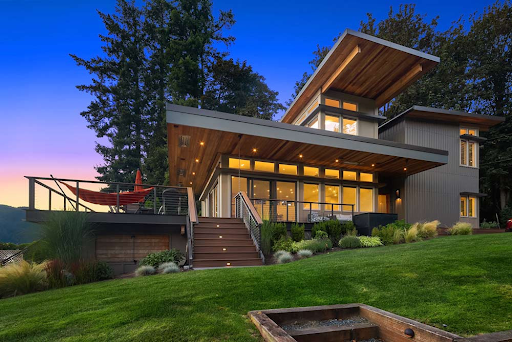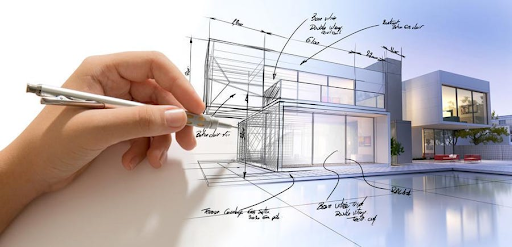Building prefabricated construction off-site factories is a step in the modular construction process that entails moving them to a job site for installation. Modular structures are made up of smaller prefabricated parts known as modules constructed on the job site while adhering to the same building norms and requirements as conventional buildings.
In a lot less time than traditional site-built construction, modular construction produces high-quality buildings built to all relevant codes and considers environmental factors such as sustainable building materials, labour efficiency, reduced waste, minimal site disruption, and lower transportation emissions.
From conception to completion, the modular building process has seven steps: design, engineering, permits & approvals, site development, plant fabrication, transportation, and installation. In the step-by-step explanation, each step is further explained in detail.

1. Design
At the design stage of the modular building process, a detailed description of the structure is created, including drawings and specifications. This information is typically gathered through an in-depth meeting with a project manager, during which the customer provides information about the desired building parameters, such as:
- How much does the project cost?
- Has the property been purchased?
- Is the building meant for short-term or long-term use?
- When will the structure be occupied?
- How many people can the building accommodate?
- How many square feet are needed?
- How many modules are necessary?
- How many restrooms are necessary?
- Do you need fire suppression systems?
- Does the structure have to comply with the ADA?
- Which way will the structure be facing?
- What type of external finish does the client desire?
- What type of interior finish does the client desire?
- What kind of flooring does the buyer desire?
- What sort of foundation is suitable?
- What sort of roof is suitable?
Here, we determine whether the client is looking for a cutting-edge, energy-efficient modular building or a construction with a tight budget. With the aid of Builder Loans home construction loans, the most pricey modular buildings can be constructed to fulfill the client’s expectations.
2. Engineering
The engineering department conducts an engineering examination of every building design. Similar to constructed on-site structures, modular buildings must go by a number of federal, state, and local building requirements to guarantee that they are safe and functional. Local building code standards, such as the High-Velocity Hurricane Zone code enacted by several coastal counties, might replace or supplement state-level building code requirements. The engineering division verifies compliance with all relevant building codes as part of the building evaluation process.
3. Permits & Approvals
Most jurisdictions require a construction or building permit for brand-new or significant upgrades. Typical building permits that may be needed include the following:
- Site map
- Building license
- Mechanical license
- Plumbing license
- Concrete approval
- Permit for encroachment
- Permit signs
- Permit for Flood District Development
The building owner must obtain building permits before any work is done on their property. In actuality, most building owners choose the general contractor as their authorized agent for the contractor to acquire the necessary permits. The building owner must verify that the general contractor has obtained the building permits for their project. Inadequate permits can lead to hefty fines, penalties, and possibly the demolition of unlicensed buildings.
4. Site Development
The site preparation and building foundation are completed while the modules are manufactured at the manufacturing facility and transported to the job site, which is one of the benefits of modular construction. In contrast to site-built construction, the site development and construction processes take place simultaneously. Projects are created in a range of geographical contexts; typical site creation entails:
- Surveying
- Demolition
- Excavation
- Grading
- Site drenching
- Building a foundation
- Putting in utilities
The two main subcategories of modular construction foundations are on-grade and raised or full foundations. Builder Loans can help with an on-grade foundation that is more expensive and often utilized for permanent installations. The cost of establishing a complete foundation is lower, it can support both temporary and permanent constructions, and it may be moved later with little damage to the site.
5. Plant Fabrication
A welded steel frame produced in a steel shop serves as the foundation for each of our modular buildings. The floor decking is then put together on top of the steel frame in the main factory manufacturing line once the steel frame has been loaded.
Framed wall components are manufactured, insulated, and hoisted into place as the module proceeds along the assembly line. Before being hoisted into position, the truss roof assembly is constructed in components at ground level. The module continues up the line, installing mechanical, electrical, and plumbing services as the final layer of insulation is put in place. Doors and windows are installed while interior finishes, including drywall, painting, and flooring, are applied.
The outside finish and trim are added at the final production stage before the module is ready for delivery.
A third-party inspection agency is on-site during construction at the manufacturing facility to ensure the modules are constructed according to building codes.
6. Transportation
Carriers specializing in the transportation of modular buildings deliver manufactured modules across the road. Building shipping restrictions in most U.S. jurisdictions are 16 inches in width and between 70 and 90 inches in length per module.
How the project is carried to the job site depends on the project’s scope and the size of the modules. The delivery is scheduled in phases for large projects, like a man camp, that include dozens of modules so that the general contractor can prepare and install the modules in a logical order.
7. Installation
The modules will be installed, any on-site finishing work will be finished, and a general contractor will make the last utility connections, frequently specializing in modular building.
How a building is installed depends on the foundation type chosen. The modules must be set with a crane for permanent, semi-permanent, and on-grade foundations. The modules can be installed using straightforward mechanical techniques using raised foundations, frequently utilized for temporary structures.
Final external and interior finishing work begins with the modules in place. Finishing touches can include stairways, wheelchair ramps, skirting, outside siding, trim, and utility connections and connections for electrical and mechanical systems connecting modules.
Conclusion

Are you interested in modular construction, but you need help with how to pay for it? The good news is that getting home construction loans should be relatively easy. Having the proper financial partner at your side can make all the difference, even though the road to a successful project is only sometimes straight.
BUILDER LOANS is eager to be your partner in achieving your objectives and is devoted to supporting you every step of the way. Contact us right now or visit BuilderLoans.NET for owner-builder construction loan information.
























